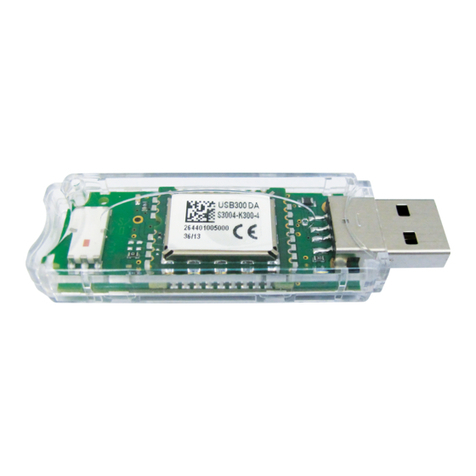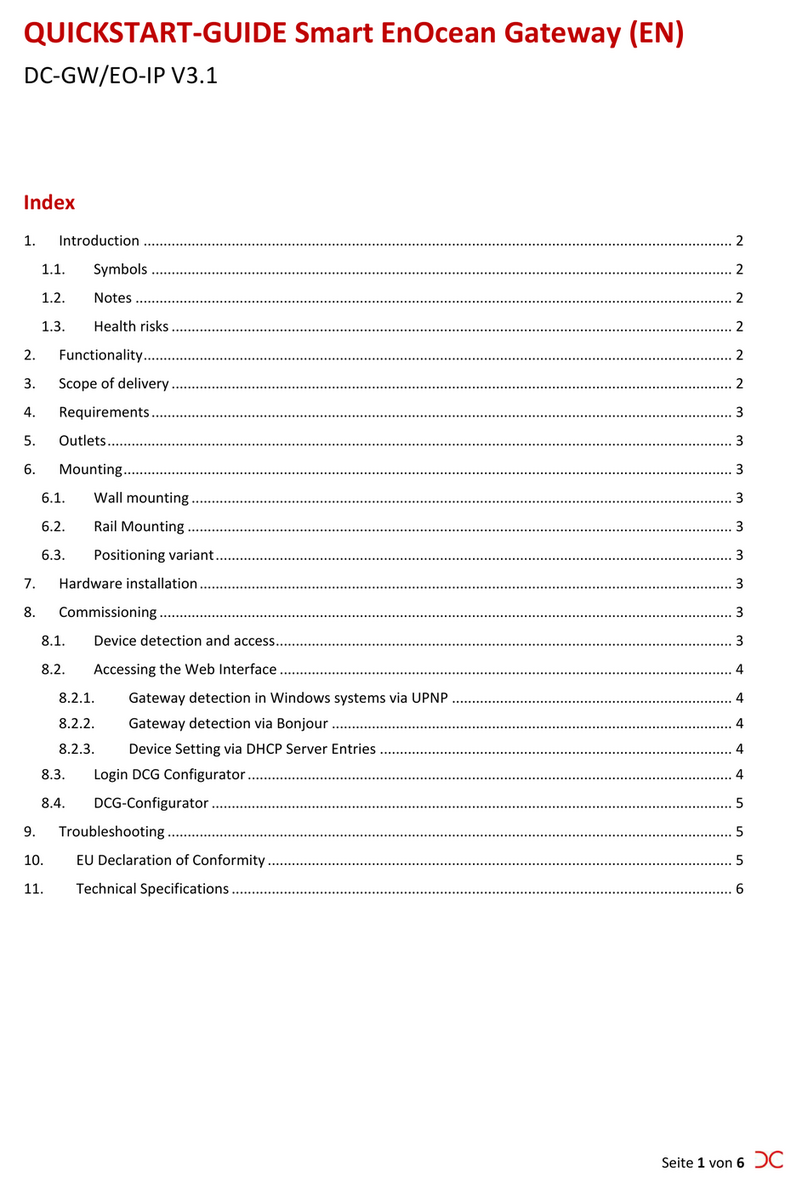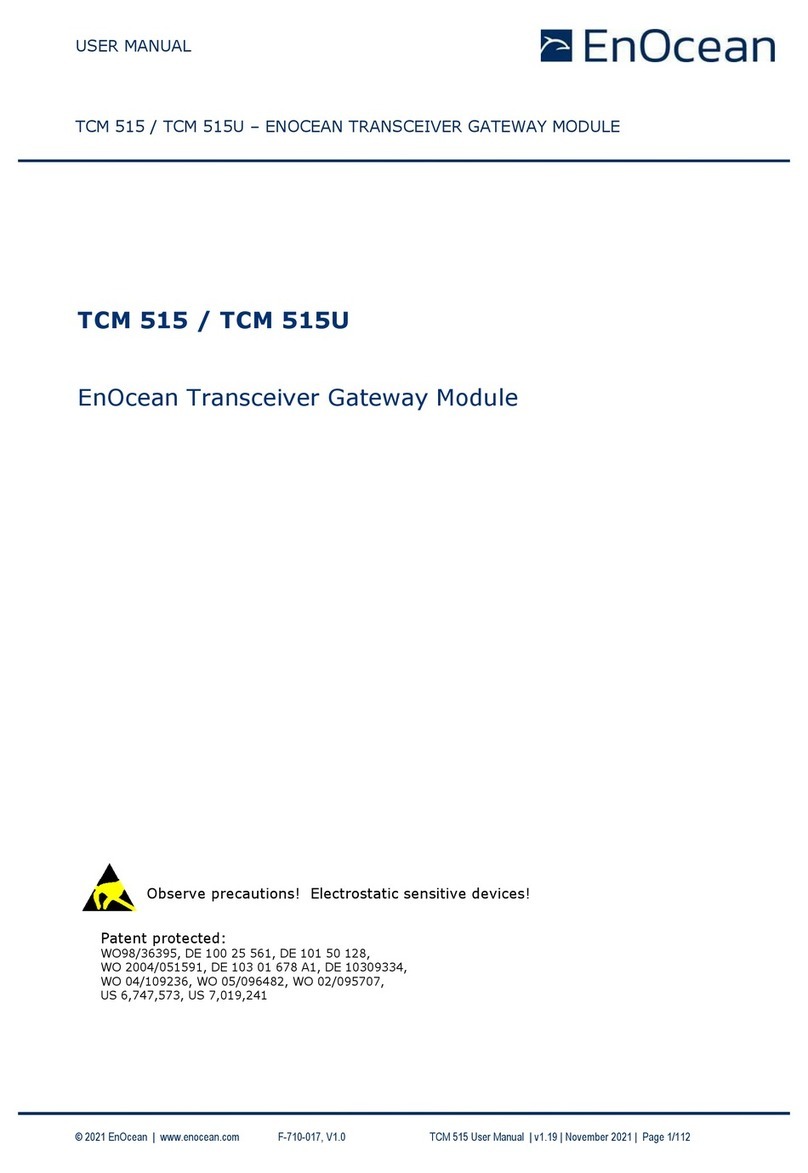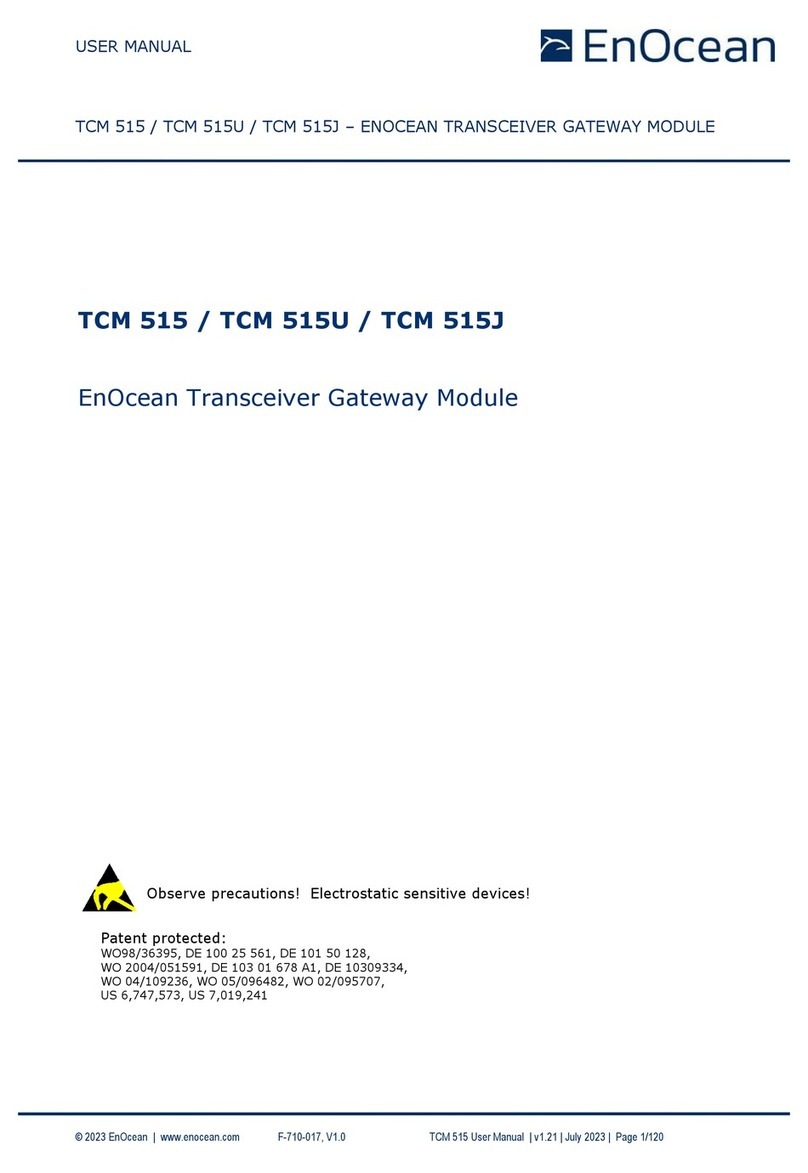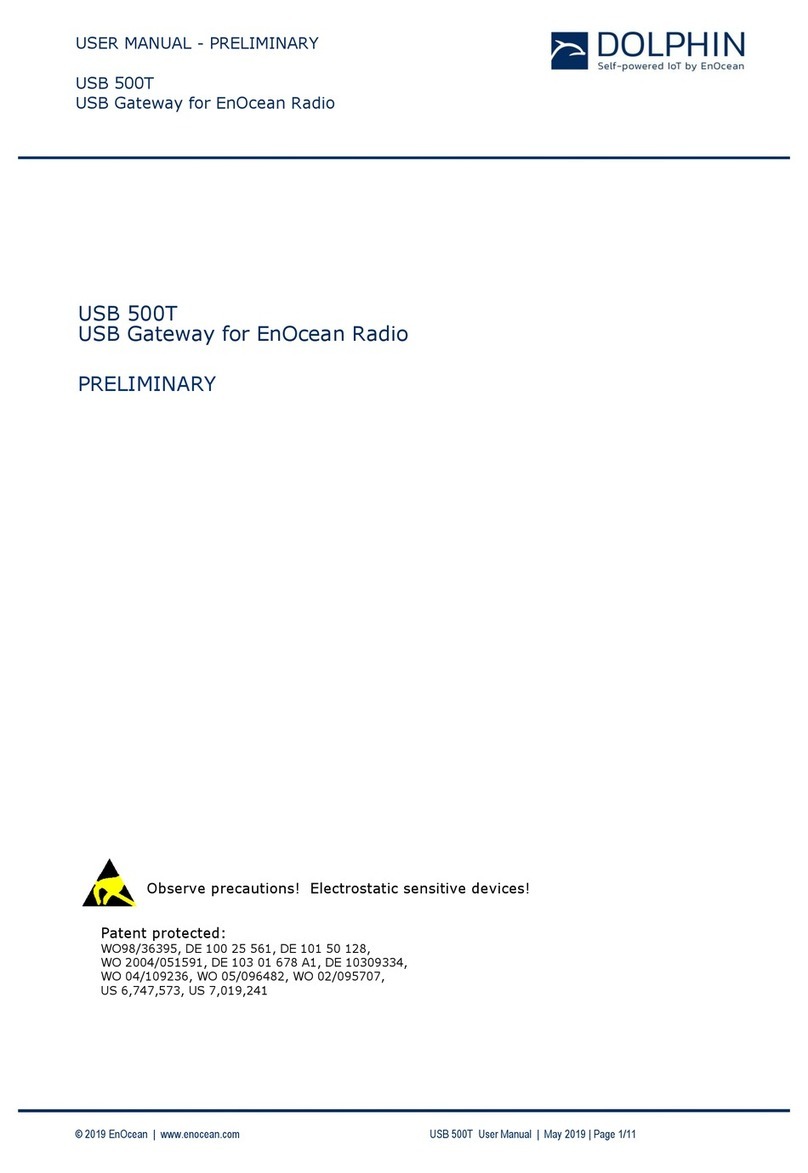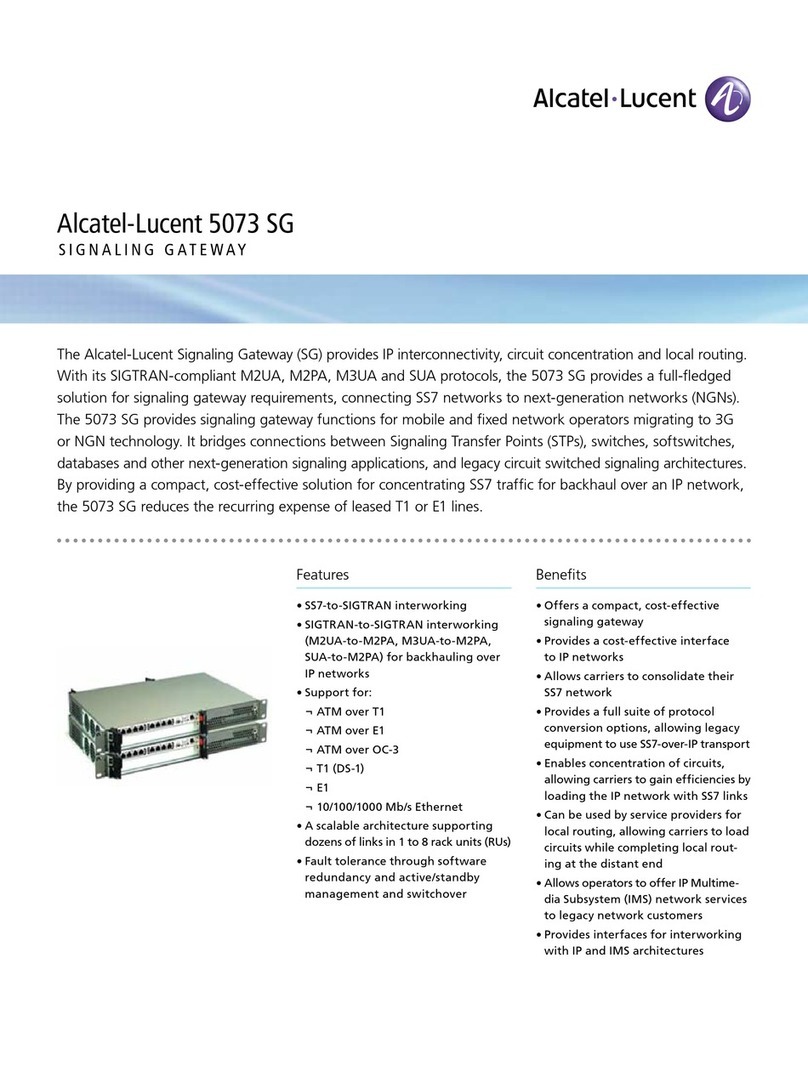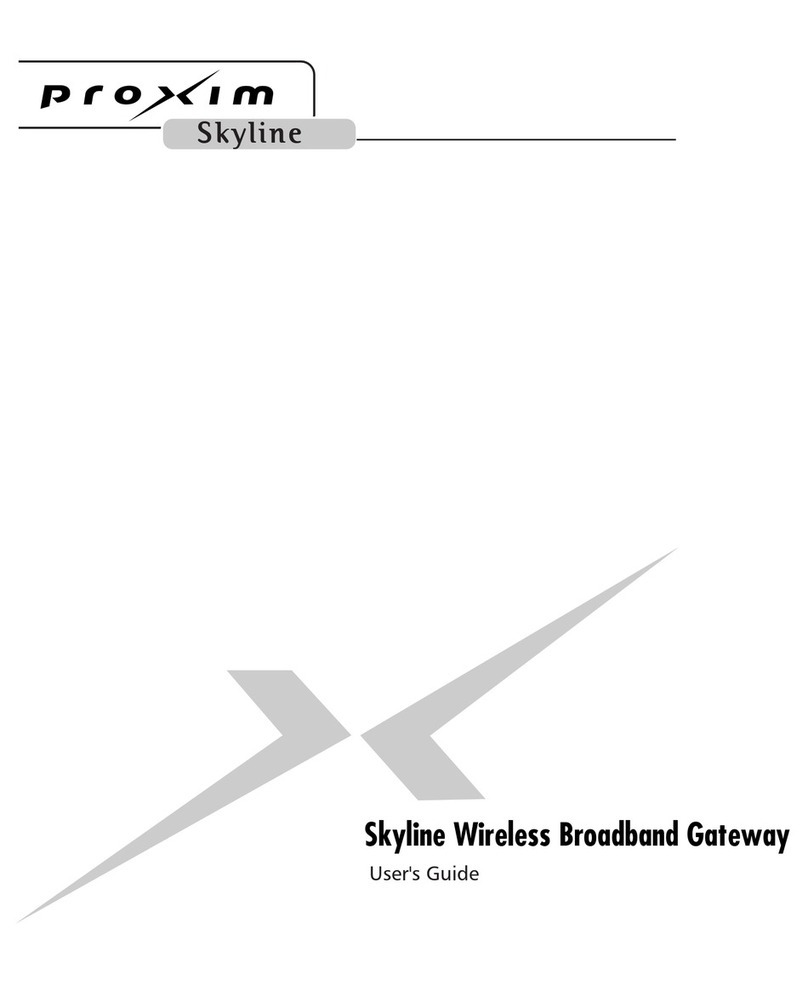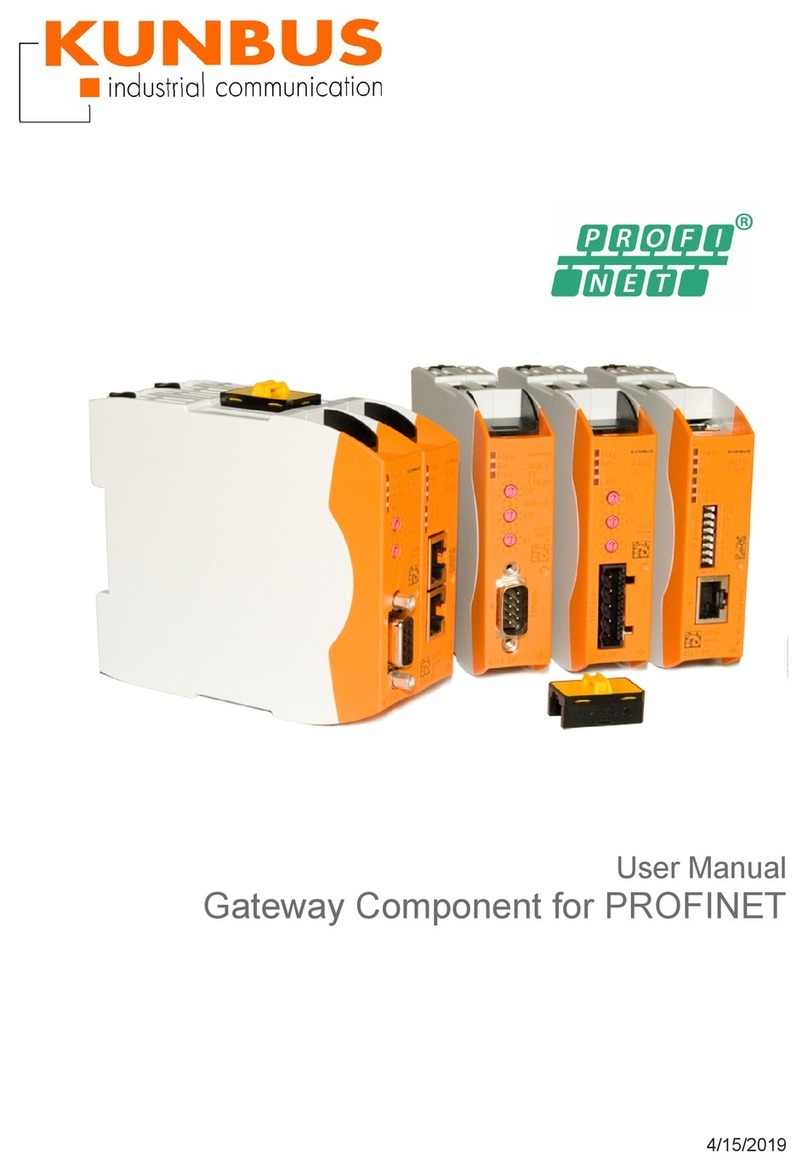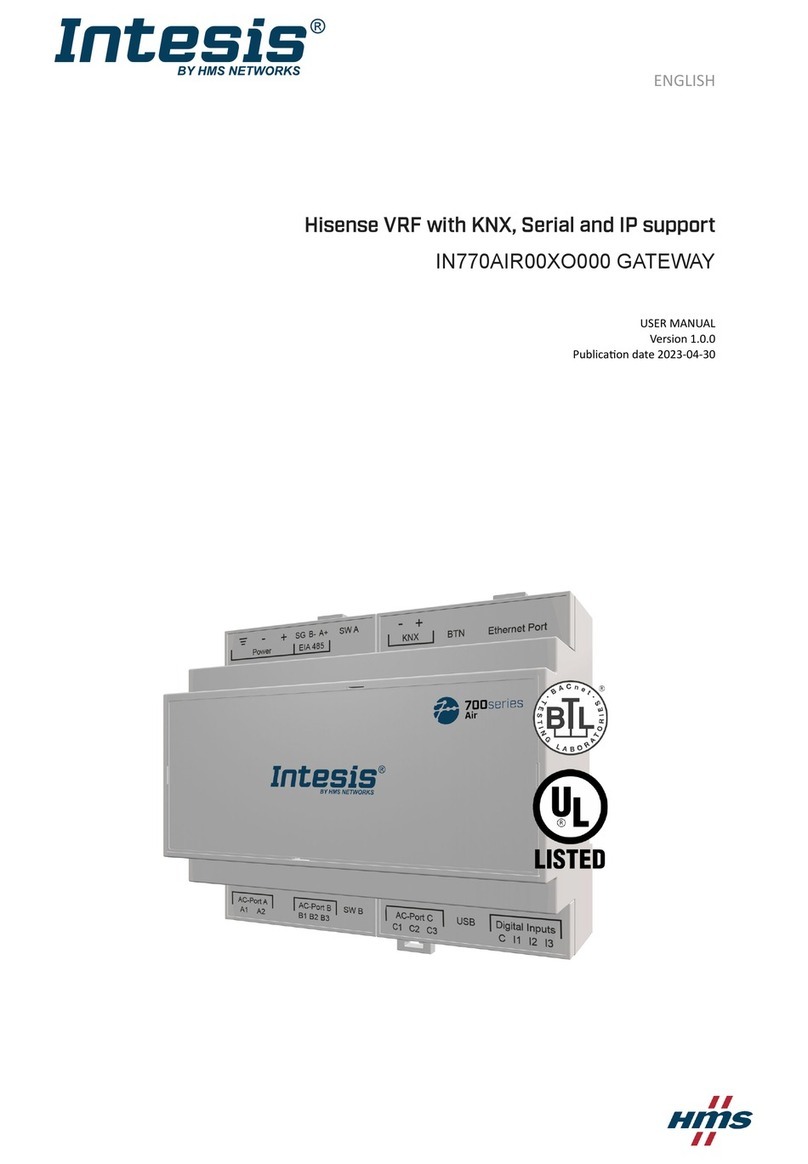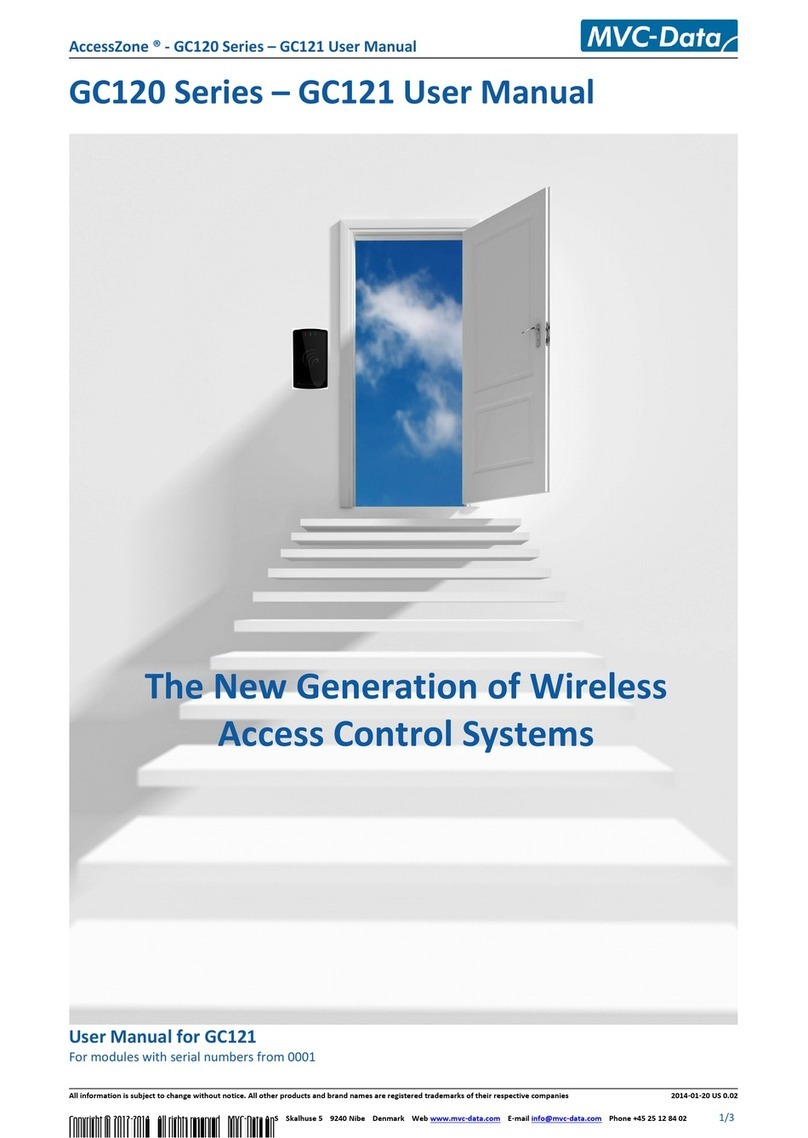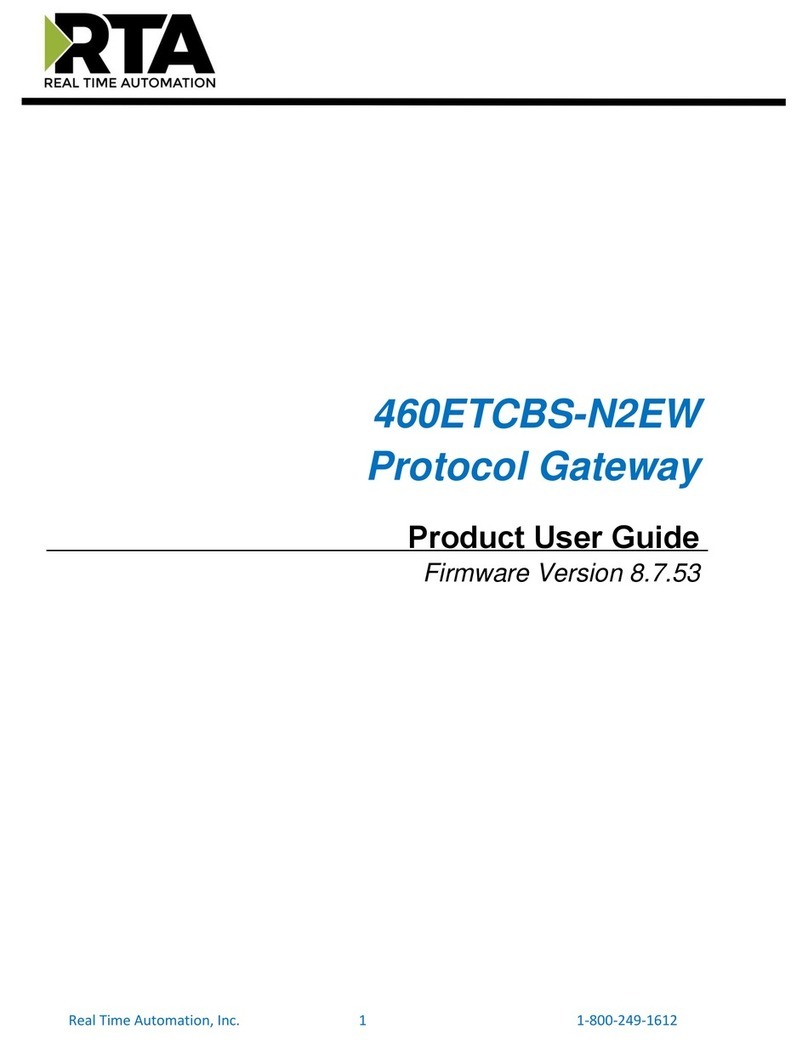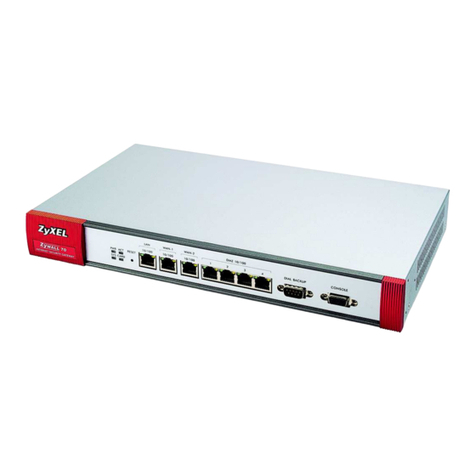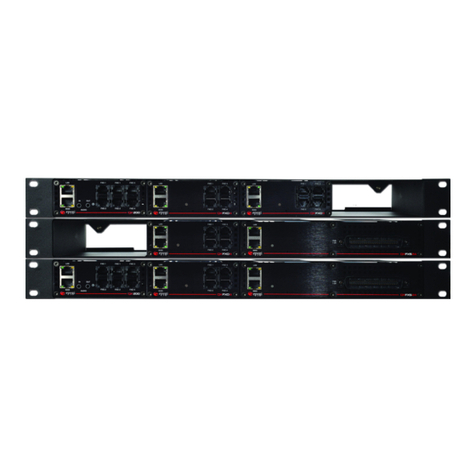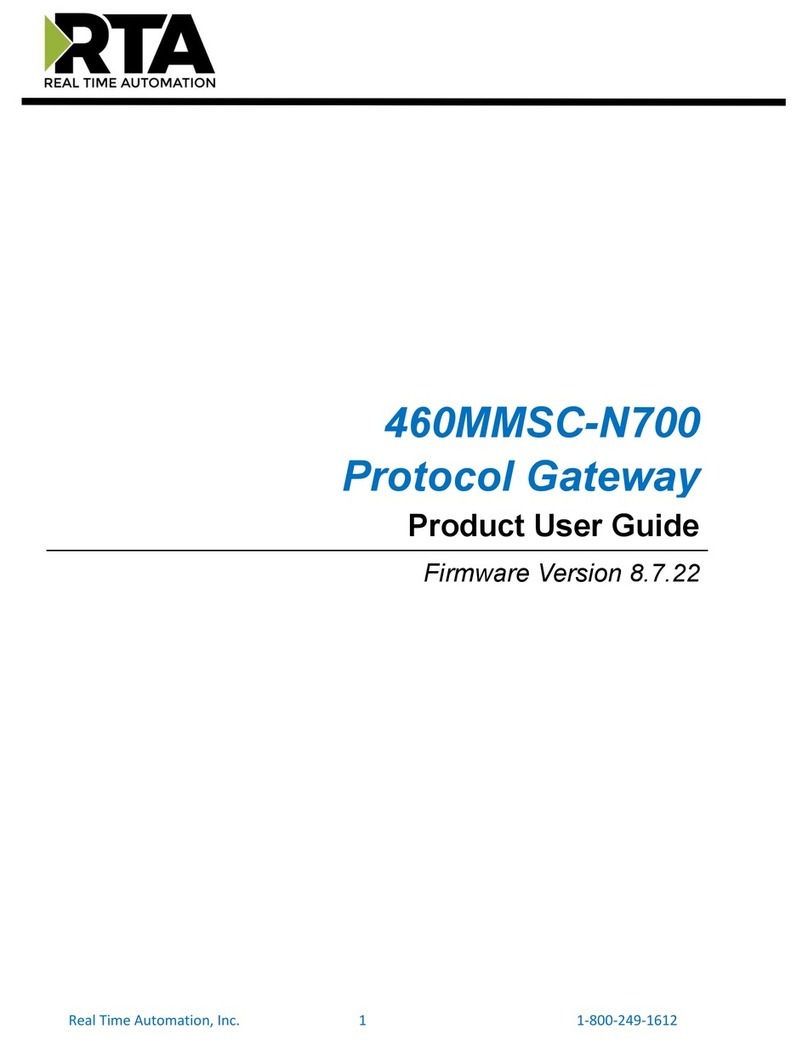EnOcean USB 300 User manual

USB 300 / USB 300C
USB Gateway for EnOcean Radio

USB 300 / USB 300C
User Manual
Page 2 ©EnOcean GmbH
Important Notes
This information describes the type of component and shall not be considered as assured characteristics.
No responsibility is assumed for possible omissions or inaccuracies. Circuitry and specifications are
subject to change without notice. For the latest product specifications, refer to the EnOcean website:
http://www.enocean.com.
As far as patents or other rights of third parties are concerned, liability is only assumed for modules, not
for the described applications, processes and circuits. EnOcean does not assume responsibility for use of
modules described and limits its liability to the replacement of modules determined to be defective due
to workmanship. Devices or systems containing RF components must meet the essential requirements
of the local legal authorities. The modules must not be used in any relation with equipment that sup-
ports, directly or indirectly, human health or life or with applications that can result in danger for peo-
ple, animals or real value. Components of the modules are considered and should be disposed of as
hazardous waste. Local government regulations are to be observed.
Packing: Please use the recycling operators known to you. By agreement we will take packing material
back if it is sorted. You must bear the costs of transport. For packing material that is returned to us
unsorted or that we are not obliged to accept, we shall have to invoice you for any costs incurred.
USB 300 and USB 300C are designed and produced as OEM products. They will be brought to market by
local OEM manufacturers. They are not considered to be finished end products in terms of WEEE (elec-
tronic waste regulation). EnOcean will not be reliable for consequences of any HW or SW
changes/modifications of the USB 300(C) done by the first marketer. Product warranty and support will
be covered by the OEM.
Important notice for users in Japan: This product is not certified as confirming to technical regula-
tions of radio law of Japan. If you use this kit in Japan, you are required by Radio Law of Japan to follow
the instructions below with respect to this product: Use this product in a shielded room or any other test
facility as defined in the notification #173 issued by Ministry of Internal Affairs and Communications on
March 28, 2006, based on sub-section 1.1 of article 6 of the “Rule for Enforcement of Radio Law of
Japan”. Use this kit only after you obtained the license of “Test Radio Station” as provided in Radio Law
of Japan with respect to this product, or use of this product only after you obtained the technical regula-
tions conformity certification as provided in radio law of Japan with respect to this product. Do not
transfer this product, unless you give the same notice above to the transferee. Please note that if you
could not follow the instructions above, you will be subject to penalties of Radio Law of Japan.
Observe precautions! Electrostatic sensitive devices!

V1.1 November 2011 Page 3
Content
1Introduction .............................................................................................................. 4
2Technical Data & Environmental Conditions............................................................... 6
3Block Diagram and Protocol Layers............................................................................ 8
4Documentation of Protocols and EnOcean Profiles..................................................... 9
5Additional Features of USB 300................................................................................ 10
6First Steps with USB 300 and DolphinView Basic..................................................... 11
7Restrictions and Hints.............................................................................................. 12
8Approvals................................................................................................................. 14
8.1 CE and R&TTE conformity (European Union)................................................................14
8.2 FCC (US) ................................................................................................................14

USB 300 / USB 300C
User Manual
Page 4 ©EnOcean GmbH
1Introduction
USB 300 is a small USB stick which connects PC’s, consumer devices,
DSL boxes and other USB master devices to the world of EnOcean
based radio products.
USB 300 is equipped with the TCM 310 transceiver module and the
gateway controller software. It provides a bidirectional EnOcean radio
with USB interface. Radio messages are sent through the virtual seri-
al interface in both directions from and to an externally connected
USB host.

V1.1 November 2011 Page 5
USB 300 sends and receives EnOcean telegrams including signal
strength. Additional control commands can be sent, e.g. to configure
repeater functionality.
Further information about supported commands and the software
features can be found within the TCM 310 user manual:
http://www.enocean.com/en/enocean_modules/tcm-310
USB 300 is available for 868 MHz and 315 MHz:
•USB 300 (868MHz) has been CE certified and conforms to the
R&TTE EU directive on radio equipment
•USB 300C (315MHz) conforms to the FCC / IC requirements

USB 300 / USB 300C
User Manual
Page 6 ©EnOcean GmbH
2Technical Data & Environmental Conditions
Dimensions: 66 x 23 x 9mm
(incl. transport cap 70 x 23 x 9mm)
OEM label size: 39 x 12mm
Weight: 12g
Operation temperature: 0°C - +40°C
Storage temperature: -25°C - +65°C
Operation humidity: 0% -80% r.h.
Storage humidity: 0% -93% r.h.
USB contact durability: 500 cycles
Max. ripple USB voltage: 50 mVpp
868 MHz version:Chip antenna (R&TTE EN 300 220)
315 MHz version: Whip antenna (FCC CFR-47 Part15)
CE declaration: yes
RoHS: yes

V1.1 November 2011 Page 7
Housing:
PCB:
TCM 310(C)
Rx/Tx LED (optional)
Power LED (optional)

USB 300 / USB 300C
User Manual
Page 8 ©EnOcean GmbH
3Block Diagram and Protocol Layers
Sensor/
Actuator
Host
USB
Interface
FTDI Virtual
COM Port
USB<>UART
FTDI
FT232R
TCM
310(C)
EnOcean
Gateway
USB
UART
Sensor/
Actuator
EnOcean
Radio
EnOcean
Radio
868/315MHz
125kBit/s
USB 300
EnOcean Serial Protocol 3
Host
Controller
EnOcean Equipment Profile (EEP 2.1)
FTDI Virtual
COM Port
RF

V1.1 November 2011 Page 9
4Documentation of Protocols and EnOcean Profiles
•Plug’n play device drivers are available from USB chip manufacturer
FTDI Limited for the operating systems Microsoft Windows, Linux and
Apple Mac OS: http://www.ftdichip.com/FTDrivers.htm
•If you want to develop for other host platforms, you can use or adapt
available C-source code for Linux OS from FTDI Website:
http://www.ftdichip.com/Drivers/VCP.htm
•USB 300 uses EnOcean Serial Protocol 3 for control commands and
data communication. A description of ESP 3 is available at:
http://www.enocean.com/en/knowledge-base/
USB 300 is based on a TCM 310 radio module, specific features and
commands are described at:
http://www.enocean.com/en/enocean_modules/tcm-310/
•The content of EnOcean radio telegrams is standardized by the EnOcean
Alliance. You will find the latest definition of EnOcean Equipment Pro-
files (EEP) at: http://www.enocean-alliance.org/

USB 300 / USB 300C
User Manual
Page 10 ©EnOcean GmbH
5Additional Features of USB 300
•USB 300 can be used as repeater of EnOcean telegrams; this will ex-
pand the range of radio devices. Repeater command has to be sent after
every power up. For details see ESP3 command description of
CO_WR_REPEATER within the ESP3 description:
•USB 300 can filter EnOcean telegrams; this can avoid heavy data load
for the host system. For details see ESP3 command description of
CO_WR_FILTER_ADD within the ESP3 description.
•USB 300 supports remote management of self-powered radio nodes.
For details see TCM 310 and ESP3 command description of RE-
MOTE_MAN_COMMAND within the ESP3 description.
•USB 300 supports smart acknowledge of self-powered radio nodes.
This feature enables bidirectional communication for self-powered radio
nodes. For details see TCM 310 and ESP3 command description of
SMART_ACK_COMMAND within the ESP3 description.
•ESP3 documentation is available at:
http://www.enocean.com/en/knowledge-base/
Hint:
For advanced analysis and protocol debugging we recommend our EnOcean Developer Kit
EDK 300 with DolphinView Advanced and Sniffer Software on TCM 3x0.

V1.1 November 2011 Page 11
6First Steps with USB 300 and DolphinView Basic
1. Register download and install DolphinView Basic:
http://www.enocean.com/en/download/
2. Plug USB 300 into free USB port the PC.
3. Start DolphinView Basic and connect to COM port
4. Press self-powered switch or learn button of sensor,
DolphinView Basic will display telegram

USB 300 / USB 300C
User Manual
Page 12 ©EnOcean GmbH
7Restrictions and Hints
•USB 300(C) should not be exposed to rapid temperature changes shortly
before or during operation. Condensation of moisture might damage the
device.
•USB 300(C) is not intended to be used in rough environment with heavy
vibrations or mechanical shocks.
•The USB front cap is used as handling protection during delivery.
•Some PCs, notebooks or set top boxes might emit electromagnetic noise
in the frequency area used by USB 300 (868MHz) or USB 300C
(315MHz). This could lead to reduced radio range and/or reduced RSSI
level. In most cases a shielded USB cable between this host devices and
USB 300(C) will reduce this effect.
•Installation location of radio nodes should be carefully planned. Applica-
tion note AN001 at http://www.enocean.com/en/application-notes/
will explain basic rules.
•USB 300C (315 MHz) usage with PC or notebook: EnOcean recommends
the usage of USB extension cord (>=30cm) to reduce noise level of PCs.

V1.1 November 2011 Page 13
•Any USB 300 configurations done by ESP3 commands (e.g. repeater on,
filter, maturity time) will be lost in case of power off. If you need these
configurations permanent, make sure USB 300 has continues power or
resend commands after power down.
•For advanced analysis and protocol debugging we recommend EnOcean
Developer Kit EDK 300 with DolphinView Advanced and Sniffer Software
on TCM 3x0.
•USB 300 has been optimized for cyclic sending/receiving status values
and not for continuous data communication; therefore the radio interface
is limited to receive approx. 90 telegrams per second.

USB 300 / USB 300C
User Manual
Page 14 ©EnOcean GmbH
8Approvals
8.1 CE and R&TTE conformity (European Union)
USB 300 (868Mhz) conforms to CE and to the R&TTE EU directive on radio
equipment. The device conforms to the European and national requirements
of electromagnetic compatibility. The conformity has been proven and the
according documentation has been deposited at EnOcean. The device can be
operated without notification and free of charge in the area of the European
Union and in Switzerland.
Labelling according to CE and WEE is done by the OEM manufacturer which
will bring the product to the market.
8.2 FCC (US)
USB 300C (315Mhz) is based on the EnOcean STM 300C radio module. This
hardware has a limited modular approval according to FCC. The conformity
has been proven and the according documentation has been deposited at
EnOcean.
Contains FCC ID: SZV-STM300C
The enclosed device complies with Part 15 of the FCC Rules. Operation is
subject to the following two conditions:
(i.) this device may not cause harmful interference and
(ii.) this device must accept any interference received, including interference
that may cause undesired operation.

V1.1 November 2011 Page 15
6.3 IC (Canada)
USB 300C (315Mhz) is based on the EnOcean STM 300C radio module. This
hardware has a limited modular approval according to FCC. The conformity
has been proven and the according documentation has been deposited at
EnOcean.
Contains IC: 5713A-STM300C
The enclosed device complies with Part 15 of the FCC Rules. Operation is
subject to the following two conditions:
(i.) this device may not cause harmful interference and
(ii.) this device must accept any interference received, including interference
that may cause undesired operation.
6.3 RoHS
EnOcean certifies that to its knowledge, USB 300 and USB 300C, are RoHS
compliant, conforming to the requirements of “Directive 2002/95/EC of the
European Parliament and of the Council of 27 January 2003 on the restriction
of the use of certain hazardous substances in electrical and electronic equip-
ment.” This declaration is based on EnOcean’s current understanding of the
RoHS Directive and information provided through supplier material declara-
tions pertinent to the ingredients and materials comprising EnOcean product.

Other manuals for USB 300
3
This manual suits for next models
1
Table of contents
Other EnOcean Gateway manuals
Popular Gateway manuals by other brands
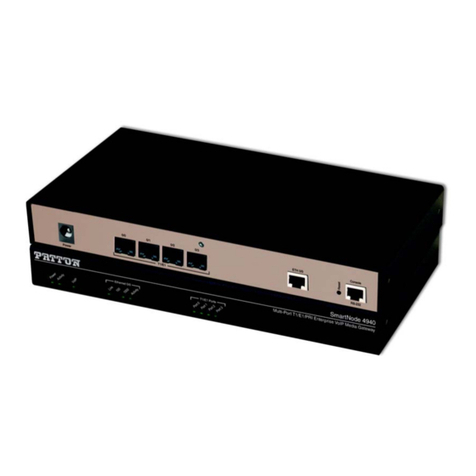
Patton
Patton SmartNode 4940 Series user manual
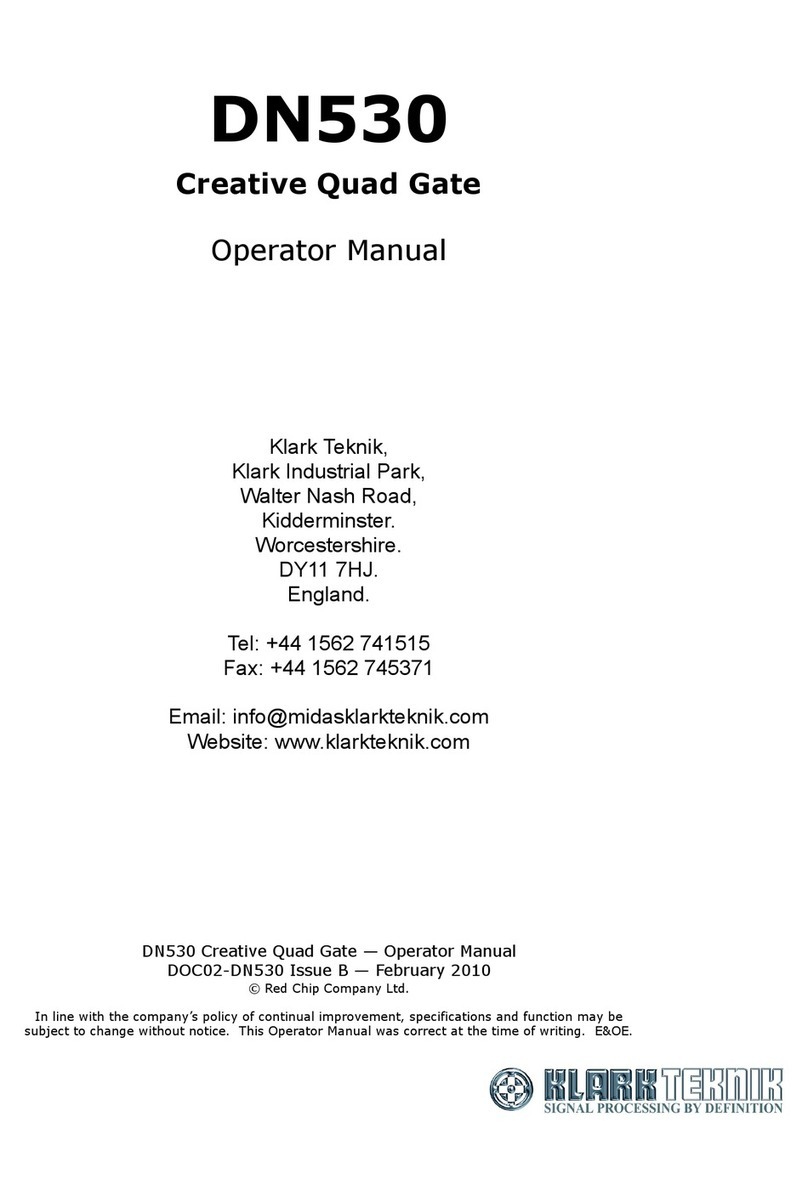
Klark Teknik
Klark Teknik DN530 Operator's manual
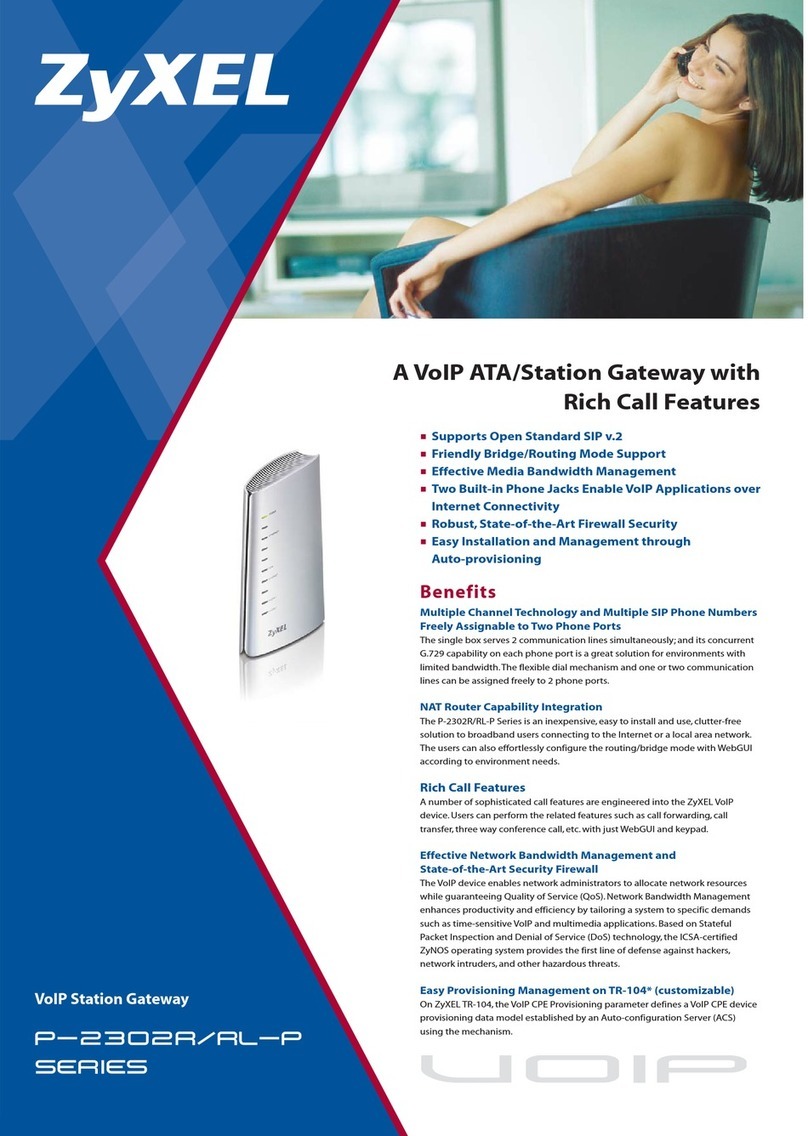
ZyXEL Communications
ZyXEL Communications p-2302r series Specifications
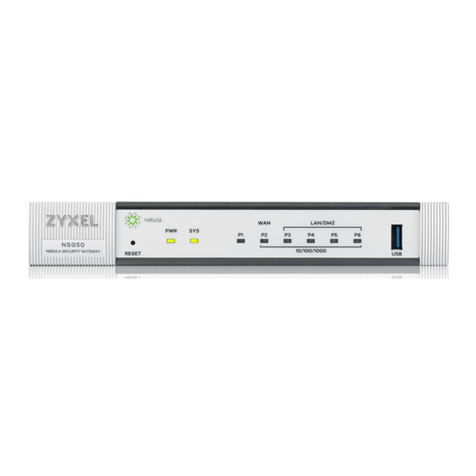
ZyXEL Communications
ZyXEL Communications NSG Series user guide
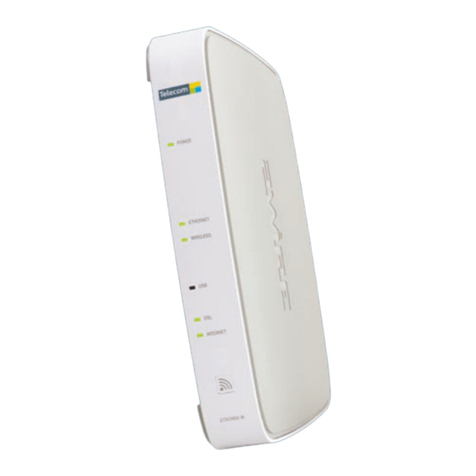
2-Wire
2-Wire 2710HGV-TNZ user manual
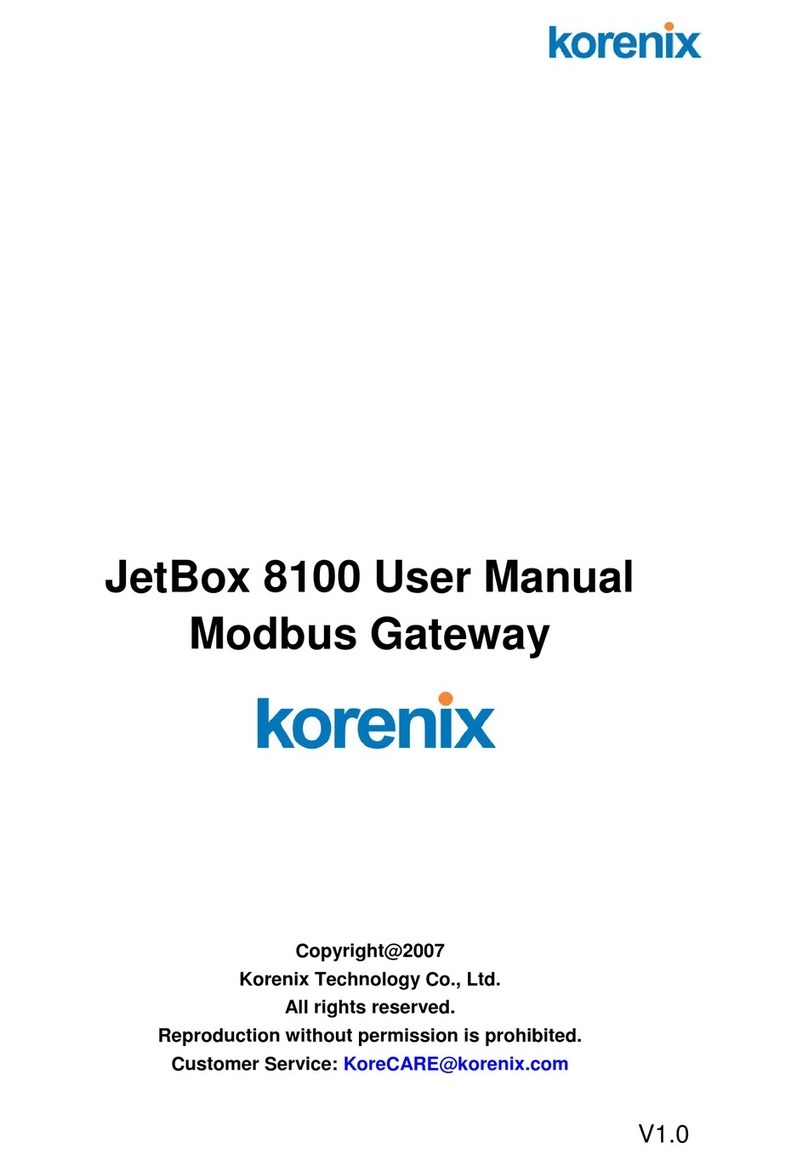
Korenix
Korenix JetBox 8100 user manual

